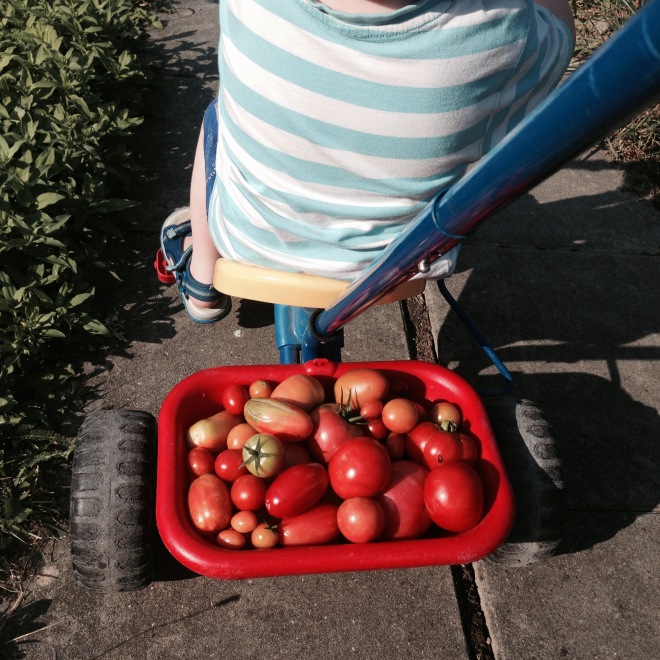Etymology of “tomato” in Europe and the Mediterranean
It’s been an extremely hot summer, which has led to a bumper crop of tomatoes. The harvest is so big that I’ve been bringing them to work to give to colleagues. I work in a very international office, and recently the discussion turned to how to say “tomato” in everyone’s native language. The results were interesting, and inspired this map (mouse over each country for more details):
https://pinea.app.carto.com/map/07127302-5d6f-479d-b3e6-f222c1abdeb6
The tomato plant is native to South America, but was first domesticated by the Aztecs in present-day Mexico. Their word for the fruit was tomatl*, which means something like “the swelling fruit”. The Spanish brought it to the New World in the 16th century, calling it a tomate.
Many languages still use a derivative of the Spanish word tomate, but another name arose in Italy. The Italian word for tomato is pomodoro, which came from pomo d’oro, or golden apple. Somehow** that name spread to Poland, where they say pomidor, and from there to Russian, Ukrainian, and several other languages.
A different name arose in some German dialects: Paradiesapfel, or “apple of paradise”, which for anyone who has eaten a ripe one right from the vine is an apt description. Although modern Germans way tomate, Austrians call it a paradieser, and variants of this were adapted into Czech, Slovak, Hungarian, Serbian and others.
In Arabic, it seems there are two common ways to say “tomato” (At least that’s what my friends tell me. I’d be happy for feedback from any Arabic linguists out there.) There’s tamatim (طماطم), which is used in North Africa. That, of course, comes from tomate. But in the Near East (Syria, Jordan, Lebanon), the common term is banadora (بندورة), from the pomo d’oro family.
It gets really interesting in Hebrew, which has a word for tomato unlike any other language. The word is agvania (עגבניה). It was coined only in 1886 and has as its root the Hebrew word for “to love, desire”. This name was chosen because of the archaic English term “love apple”, an homage to the apparent aphrodisiac properties of the tomato. More on the story of the Hebrew word here.
So there you have it. Pretty interesting for a fruit (vegetable?) only introduced to much of the world a few hundred years ago. Sources for map include Google Translate and Cultivated Vegetables of the World: A Multilingual Onomasticon, an actual book that actually exists. I made the map in CartoDB using the Watercolor base map from Stamen Design. If you want to see more etymology maps, there’s a subreddit dedicated to the topic.
And if all that hasn’t made you hungry from some apples of paradise, this will:

UPDATE: A few readers have correctly pointed out that what I have is a map of nation states, not a map of languages. For the sake of simplicity I am using national borders as a proxy for language regions. I should have specified that I selected the language for each country based on the official language, or if there is more than one, the most commonly spoken language. One negative consequence of that approach is that several states languages did not make it onto the map (e.g. Basque (tomate or tomatea) and Kurdish (temate)).
* More precisely, “tomatl” comes from the Nahuatl words “tomohuac” (swelling, roundness, fatness) and “atl” (water).
** I have subsequently been informed that “pomodoro” was introduced to Poland by the Italian noblewoman Bona Sforza, who became Queen of Poland by marriage in 1518.
Thanks to the members of reddit.com/r/etymologymaps for the helpful feedback and corrections
